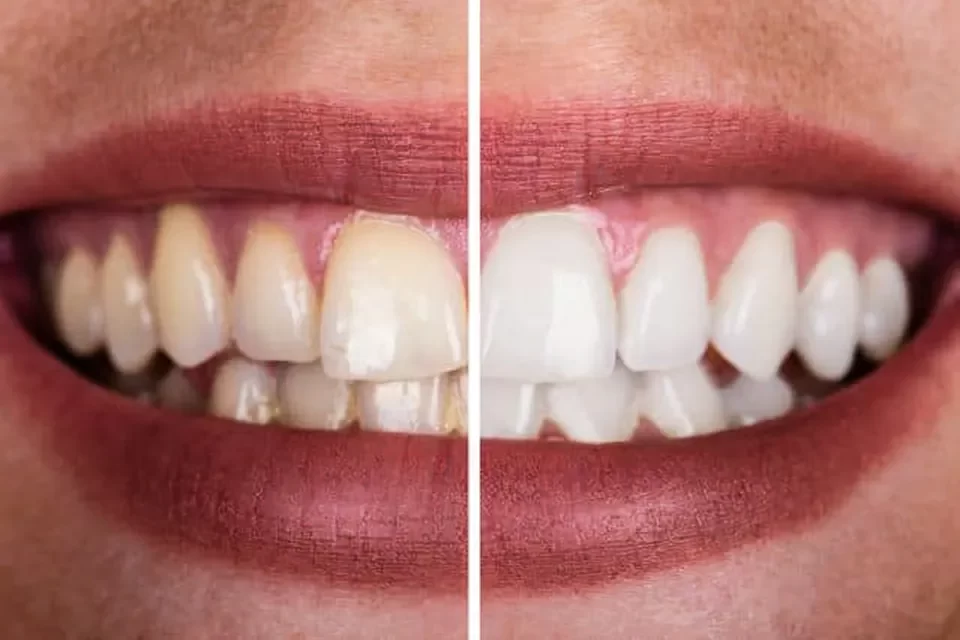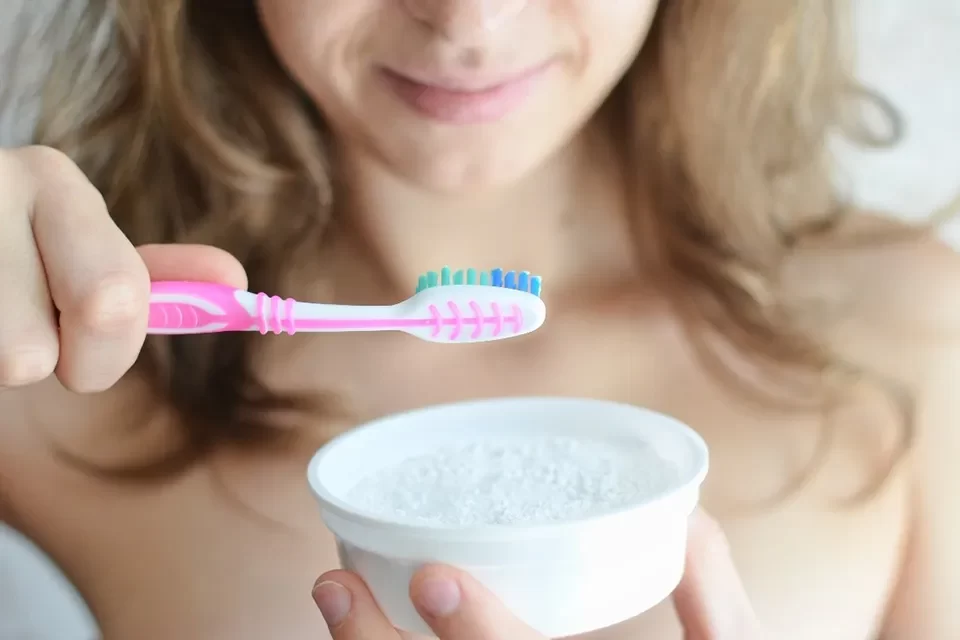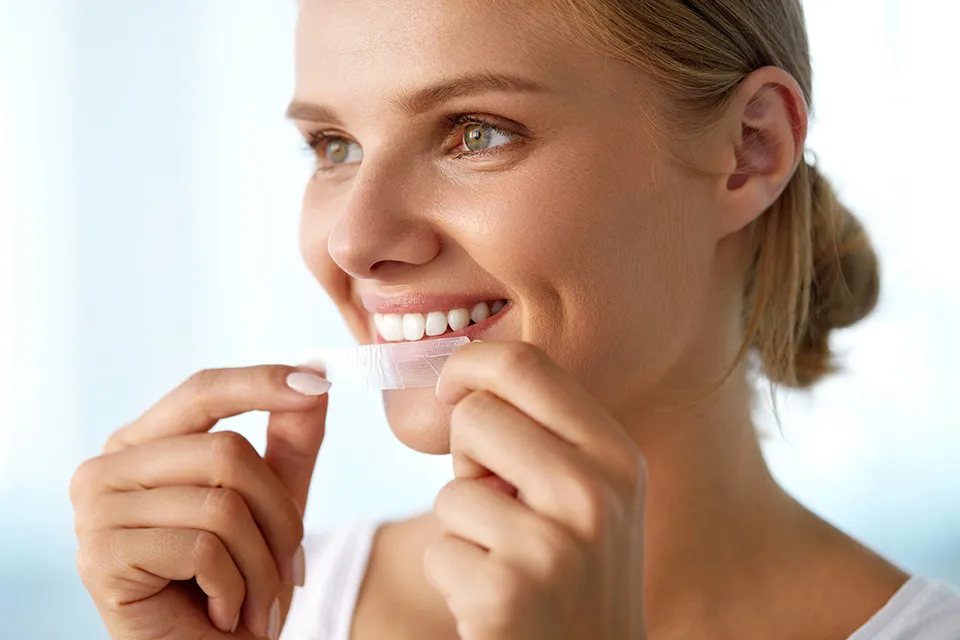The process of teeth whitening with baking soda involves the use of sodium bicarbonate, a mildly abrasive white crystalline substance, to eliminate stains from the surface of the teeth. This technique contributes to a whiter, brighter smile by utilizing the chemical and physical properties of baking soda to remove stains.
There are numerous noteworthy advantages to using baking soda to whiten teeth:
- Cost-Effectiveness: Baking soda is a highly affordable substance, available in bulk at a low cost.
- Accessibility: It is available in almost any grocery store or pantry, making it a convenient option for teeth whitening.
- Natural Whitening Properties: Baking soda effectively removes surface stains from teeth, including those caused by coffee, tea, and smoking.
- Oral Health Benefits: It also neutralizes acids in the mouth, lowering the risk of tooth decay and boosting overall dental health.
Baking soda whitens teeth through a combination of mechanical and chemical processes:
- Abrasive Action: Baking soda’s mild abrasive nature allows it to gently scrub away surface stains from teeth without causing enamel damage when used correctly.
- Chemical Reaction: By neutralizing acids in the mouth caused by bacteria, baking soda creates an unfavourable environment that promotes plaque formation and additional discoloration.
Furthermore, baking soda teeth whitening is ideal for people who want to remove external surface stains from their teeth. It is a wonderful option for individuals who favour natural, DIY approaches and want a low-cost solution.
However, there are limitations to what baking soda teeth whitening can achieve:
- Intrinsic Stains: Baking soda is less effective on intrinsic stains that are below the surface of the enamel.
- Dental Restorations: It cannot change the colour of dental restorations such as fillings, crowns, and veneers.
What Are the Best Methods of Baking Soda Teeth Whitening?
A basic way is to create a paste by mixing a small amount of baking soda with water.
Baking soda can be used with a small amount of hydrogen peroxide to create a paste for a more substantial whitening effect. In order to prevent any irritation, this combination should be used with caution.
In order to maximize results and maintain patient safety, dental professionals may apply baking soda in combination with other whitening agents during professional procedures.
What Are the Steps Involved in DIY Baking Soda Teeth Whitening Methods?
- Simple Baking Soda Paste: Mix 1-part baking soda with two parts water to form a paste. Brush your toothbrush carefully for two minutes after applying it.
- Baking Soda and Hydrogen Peroxide: Create a paste using baking soda and a small amount of 3% hydrogen peroxide. Brush gently and rinse thoroughly.
How Frequently Should One Brush with a Baking Soda Paste for Effective Teeth Whitening?
The majority of people only need to use a baking soda paste twice a week. Overuse can cause enamel wear; therefore, moderation is crucial.
What Happens if You Mix Baking Soda with Lemon?
Baking soda and lemon juice make an effective whitening paste, but the acidity of lemon may erode tooth enamel. This combination should be used sparingly.
What is the Recommended Ratio for Combining Baking Soda and Hydrogen Peroxide for Teeth Whitening?
A safe ratio is a 2:1 mixture of baking soda and hydrogen peroxide. This creates a paste that’s effective yet gentle on the teeth.
How Does a Professional Baking Soda Teeth Whitening Treatment Differ from At-Home Methods?
Professional treatments may involve higher concentrations of whitening agents, including baking soda, applied with precision and expertise. Moreover, this ensures effectiveness and safety, lowering the risk of damage to enamel and gums.
Effectiveness and Safety of Baking Soda Teeth Whitening
Clinical studies have shown that baking soda is efficient at removing surface stains from teeth, resulting in a substantially whiter smile. The effectiveness is generally more pronounced on surface stains and less so on deep, intrinsic stains.
While baking soda is generally safe for occasional use, excessive use can cause enamel abrasion and gum irritation. Before beginning any teeth whitening treatment, it is critical to adhere to specified instructions and consult with a dental professional.

What Are the Advantages of Baking Soda Teeth Whitening?
- Cost-effective and widely accessible
- Effective for surface stain removal
- Less abrasive than some alternatives
What Are the Disadvantages and Risks of Baking Soda Teeth Whitening?
- Limited effectiveness on intrinsic stains
- Potential enamel erosion with overuse
- Possible gum irritation
Is Baking Soda Safe for Teeth Long Term?
Moderate, infrequent use of baking soda for teeth whitening is unlikely to result in severe long-term harm. Over time, however, persistent overuse may result in enamel deterioration, which may heighten tooth sensitivity and susceptibility to decay.
What Are Alternative Ways to Baking Soda Teeth Whitening
While it is a common and successful approach for teeth whitening, numerous alternatives have different benefits and considerations.
Coconut Oil Pulling
The traditional approach involves swishing coconut oil in the mouth for 15-20 minutes to remove bacteria and potentially lighten teeth.
Activated Charcoal Teeth Whitening
Activated charcoal can absorb stains on teeth, providing an alternative to individuals looking for a natural whitening solution.
Turmeric Teeth Whitening
Despite its deep colour, turmeric is occasionally used as a natural teeth whitener, though the evidence for its efficacy is anecdotal.
Over-the-Counter Teeth Whitening Products
A variety of commercial treatments, including whitening strips, gels, and toothpaste, provide easy at-home whitening options.
Professional Teeth Whitening Treatments
For individuals looking for more dramatic results, professional teeth whitening procedures performed by dental professionals are a safe and effective choice.
How to Choose the Right Teeth Whitening Method?
Choosing the best teeth whitening procedure requires taking into account a number of factors, including the nature of your stains, your oral health, budget, and personal preferences. In addition, consulting with a dental professional can help you decide which method is best for your needs.
In this post, we’ve looked at the various approaches to baking soda teeth whitening, including the benefits, procedures, and safety considerations. While baking soda is a natural and accessible option for improving the appearance of your smile, it is essential to use it wisely and consider alternative treatments if necessary. White Pearl Dental is ready to help you achieve the bright, healthy smile you want.

What Factors to Consider When Choosing a Teeth Whitening Method
In order to ensure that the teeth whitening procedure chosen is most suitable for one’s particular circumstances and requirements, it is crucial to consider a number of factors. Here are some important considerations:
Individual Oral Health
Assess the overall health of your teeth and gums. Those with sensitive teeth, gum disease, or dental restorations should choose their whitening procedure with caution to avoid irritation or damage.
Desired Level of Whitening
Determine the degree of whitening you want to attain. If you wish to address deep stains or get a much whiter smile, professional treatments may be more appropriate than DIY options.
Budget
Consider how much you are willing and able to spend on teeth whitening. Moreover, costs range considerably, from low-cost home remedies to more expensive professional treatments.
Convenience
Evaluate how much time and effort you are willing to invest in the whitening process. While DIY procedures can be used at home, they may necessitate more frequent applications than professional treatments.
Tips for Maintaining White Teeth After Using Baking Soda for Teeth Whitening
Maintaining your newly whitened teeth is essential for long-term results. Here are recommended tips for keeping your smile bright:
Regular Brushing and Flossing
To avoid new stains, maintain a rigorous oral hygiene practice that includes brushing and flossing on a regular basis.
Limiting Staining Foods and Beverages
Reduce your intake of coffee, tea, red wine, and other staining foods and beverages to reduce the likelihood of discolouration.
Using a Straw When Drinking Dark Liquids
When consuming dark-coloured beverages, use a straw to bypass your front teeth, reducing the potential for stains.
Avoiding Tobacco Products
Tobacco use can significantly discolour teeth. Quitting smoking or using tobacco products can help maintain your whitening results.
Lifestyle Tips
Maintain a balanced diet high in fruits, vegetables, and plenty of water to promote oral health and keep your teeth looking their best.

Frequently Asked Questions About Baking Soda Teeth Whitening
How Long Does It Typically Take to See Results with Baking Soda Teeth Whitening?
Although results may vary, many people notice an improvement after multiple applications over a week or two. Consistency is essential for noticeable whitening results.
Is Baking Soda Safe for Teeth Whitening, and Are There Any Potential Risks?
Baking soda is generally safe to use on occasion for teeth whitening. However, excessive use might result in enamel erosion and gum irritation. Moreover, it’s essential to use it sparingly and follow recommended guidelines.
How Often Should I Brush with a Baking Soda Paste for Teeth Whitening?
For most people, brushing with a baking soda paste 1-2 times per week is sufficient. To prevent enamel abrasion, avoid using it on a daily basis.
Is There a Difference in Results Between Professional Baking Soda Teeth Whitening and At-Home Methods?
Professional whitening treatments can frequently produce more dramatic and faster results than at-home approaches due to the use of stronger whitening agents and professional application techniques.
Summary
Baking soda teeth whitening is an accessible and inexpensive technique to get a brighter smile. While effective for surface stains, it’s essential to use it properly and consider professional advice to avoid potential risks. Individuals who understand the benefits, procedures, and safety concerns related to baking soda teeth whitening can make more informed decisions regarding their oral health and cosmetic dentistry options. Whether you choose a DIY approach or professional treatment, maintaining proper oral hygiene and making lifestyle choices that promote dental health are essential for long-term outcomes.
Furthermore, our goal at White Pearl Dental is to help you attain and keep the beautiful, healthy smile you deserve. If you’re considering teeth whitening or have any questions about your oral health, we’re here to provide expert guidance and support every step of the way.
At White Pearl Dental in Vaughan, Ontario, we understand the desire to have a dazzling white smile. Baking soda teeth whitening is a popular method due to its simplicity, affordability, and accessibility. This comprehensive guide will cover everything from the fundamentals of baking soda teeth whitening to its efficacy, safety, and alternatives.


